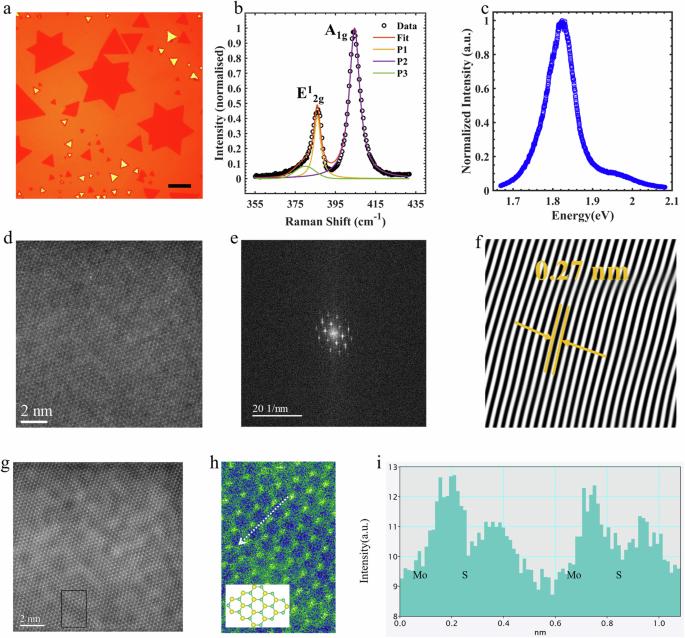Defect-engineered monolayer MoS2 with enhanced memristive and synaptic functionality for neuromorphic computing
IF 7.5
Q1 MATERIALS SCIENCE, MULTIDISCIPLINARY
引用次数: 0
Abstract
Two-dimensional transition metal dichalcogenides (TMDs)-based memristors are promising candidates for realizing artificial synapses in next-generation computing. However, practical implementation faces several challenges, such as high non-linearity and asymmetry in synaptic weight updates, limited dynamic range, and cycle-to-cycle variability. Here, utilizing optimal-power argon plasma treatment, we significantly enhance the performance matrix of memristors fabricated from monolayer MoS2. Our approach not only improves linearity and symmetry in synaptic weight updates but also increases the number of available synaptic weight updates and enhances Spike-Time Dependent Plasticity. Notably, it broadens the switching ratio by two orders, minimizes cycle-to-cycle variability, reduces non-linear factors, and achieves an energy consumption of ~30 fJ per synaptic event. Implementation of these enhancements is demonstrated through Artificial Neural Network simulations, yielding a learning accuracy of ~97% on the MNIST hand-written digits dataset. Our findings underscore the significance of defect engineering as a powerful tool in advancing the synaptic functionality of memristors. Memristors based on 2D materials are promising candidates for realizing artificial synapses in next-generation computing. Here, utilizing optimal-power argon plasma treatment, the authors enhance the performance of memristors fabricated from monolayer MoS2, reducing non-linearity and asymmetry in synaptic weight updates and minimizing cycle-to-cycle variability.

用于神经形态计算的具有增强记忆和突触功能的缺陷工程单层 MoS2
基于二维过渡金属二钙化物(TMDs)的忆阻器有望在下一代计算中实现人工突触。然而,实际应用面临着一些挑战,例如突触权重更新的高度非线性和不对称性、有限的动态范围以及周期间的可变性。在这里,我们利用最佳功率氩等离子处理技术,显著提高了单层 MoS2 制成的忆阻器的性能矩阵。我们的方法不仅提高了突触权重更新的线性和对称性,还增加了可用突触权重更新的数量,并增强了尖峰时间相关可塑性。值得注意的是,它将开关比扩大了两个数量级,最大限度地减少了周期间的可变性,降低了非线性因素,并使每个突触事件的能耗降至 30 fJ。我们通过人工神经网络模拟演示了这些增强功能的实现,在 MNIST 手写数字数据集上的学习准确率达到了 97%。我们的研究结果强调了缺陷工程的重要性,它是提高忆阻器突触功能的有力工具。基于二维材料的忆阻器是实现下一代计算中人工突触的理想候选材料。在这里,作者利用最佳功率氩等离子体处理技术,提高了单层 MoS2 制成的忆阻器的性能,减少了突触权重更新的非线性和不对称,并最大限度地降低了周期间的可变性。
本文章由计算机程序翻译,如有差异,请以英文原文为准。
求助全文
约1分钟内获得全文
求助全文
来源期刊

Communications Materials
MATERIALS SCIENCE, MULTIDISCIPLINARY-
CiteScore
12.10
自引率
1.30%
发文量
85
审稿时长
17 weeks
期刊介绍:
Communications Materials, a selective open access journal within Nature Portfolio, is dedicated to publishing top-tier research, reviews, and commentary across all facets of materials science. The journal showcases significant advancements in specialized research areas, encompassing both fundamental and applied studies. Serving as an open access option for materials sciences, Communications Materials applies less stringent criteria for impact and significance compared to Nature-branded journals, including Nature Communications.
 求助内容:
求助内容: 应助结果提醒方式:
应助结果提醒方式:


